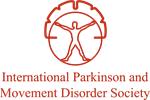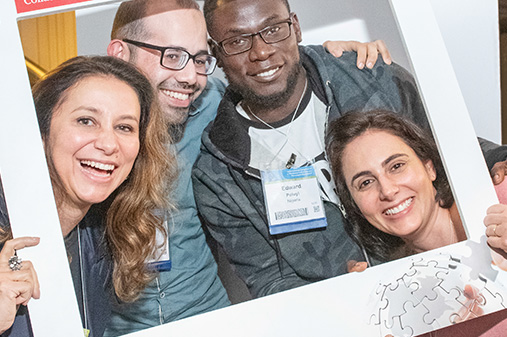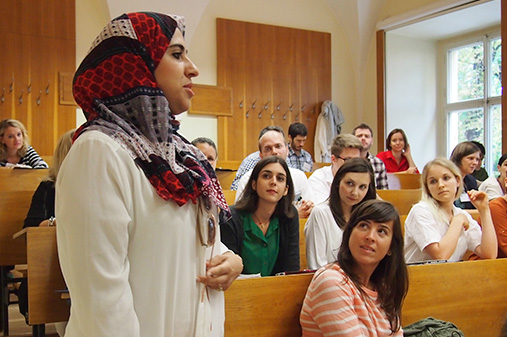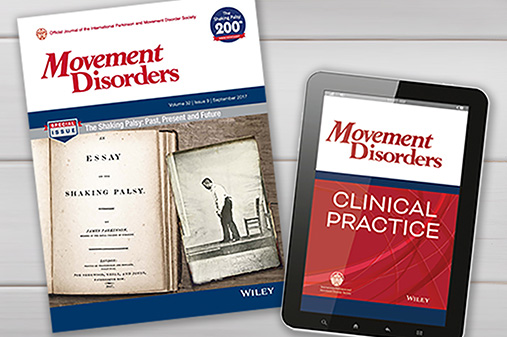Updates in tauopathies • 2025 MDS Congress
Dr. Sara Schaefer: [00:00:00] Hello and welcome to the MDS podcast, the official podcast of the International Parkinson and Movement Disorder Society. I'm your host, Sarah Schaefer, from the Yale School of Medicine and the deputy editor of this podcast. And today as part of our Congress 2025 series, I'm here with Dr. Yaroslau Compta, who is a neurologist and movement disorder specialist at hospital clinic at the University of Barcelona. And he's also the co-chair of the PSP study group. And today we're going to be talking about tauopathies. So thank you so much for joining us today in Honolulu, Hawaii.
View complete transcript
Dr. Yaroslau Compta: Hello. It's a pleasure being here, and thank you very much to the MDS podcast committee for inviting me to discuss novelties on the broad field of tauopathies.
Dr. Sara Schaefer: As any of you that have listened [00:01:00] to our Congress series in the past know, we're gonna mostly review updates from the past year in the topic of choice, which today is tauopathies. I wanna start with just an overall idea of how our conceptualization of taupathies has evolved.
It does seem like we're constantly coming up with new diagnostic criteria. There's, a corticobasal type of PSP and vice versa. And I really would love to hear your expert thoughts on your conceptualization of tauopathies.
Dr. Yaroslau Compta: Yeah, absolutely. Sometimes we get the feeling that the more we learn, the less we know. But we are moving on, and I think that we are moving in the same direction as many other diseases in our field. So we are moving towards a more, not exclusively biologically-driven definition, but at least a clinical biological concept for the tauopathies.
And the main two tauopathies that we deal with are obviously, PSP and Corticobasal degeneration. So yeah, we [00:02:00] still have from 2017, so it's already eight years down the track, the MDS PSP criteria, which were novel I think, and have contributed to the field because of introducing some very routine and widely available biomarkers like MRI imaging for ruling out other conditions, but also to include for the first time the measurement of the midbrain, either on structural MRI or also by nuclear medicine imaging. And also the concept of the "suggestive of PSP" cases, which are intended to be like a proxy of prodromal or very early PSP cases that in the appropriate research setting can help us to validate biomarkers for an early diagnosis and eventually recruitment of very early cases for clinical trials. So this is something that is good, I think, about the currently available PSP diagnostic criteria. In terms of corticobasal degeneration, the criteria that are most widely applied , the Armstrong and [00:03:00] colleagues from 2013 one, are a bit older and there is an ongoing effort by the PSP study group to revise and revisit them and update them. Stay tuned in this regard.
Dr. Sara Schaefer: And looking at the pathophysiology of these disorders, we're learning more and more about co-pathology, which was talked about a lot at last year's Congress and and even induced tauopathies like in the case of IgLON5. And do you have any comments about those aspects of tauopathies that just add a whole nother element to things?
Dr. Yaroslau Compta: Yeah, definitely. This is another very important topic and yeah, I had the pleasure of speaking about this in the plenary session last year in Philadelphia, about the co pathology. We used to think in terms of a clinical picture and a single pathology, but last year in the conference, everyone was already saying that this rule is not applicable anymore. The rule is the co pathology rather than the exception, as we used to think in the old [00:04:00] days.
Very important and particularly because now we can measure it, is the synuclein co pathology in taopathy. So I think that there is increasing interest in this and just because we can measure it using the seed amplification assays for alpha-synuclein. So there is an increasing number of studies on this. And I think that the figures that are being reported match closely, those from the neuropathological studies. So this makes the findings consistent and easy to believe. So between 10, 20, in a few studies, a bit even a bit more of percentage of positive alpha-synuclein SAA results in PSP and corticobasal degeneration patients. So this is something important, because this could impact in the results of clinical trials. We are looking at results of clinical trials, sometimes negative results.
I want also to discuss the recent developments in clinical trials in tauopathies and unfortunately, we just learned about the negative result of the ORION clinical [00:05:00] trial using an oral compound that was trying to reduce or improve the endoplasmic reticulum and mitochondrial stress in PSP. And unfortunately, as I was saying, the clinical trial was negative. But for instance, we don't know if these patients, some of them had pure pathology, some of them were positive for alpha-synuclein, and this could impact. You can think that 10 to 20% of positive cases are a small percentage of cases, but still in a clinical trial this could make a difference and rule out a drug that otherwise would be helpful.
So this is something that definitely we will need to increasingly take into consideration.
Dr. Sara Schaefer: So you talked about how we can identify synuclein and of course we can identify amyloid now in vivo. What about tau? Where are we at with that?
Dr. Yaroslau Compta: Yeah, tau like synuclein used to be in the past, at least in the lab studies, is like a tough nut to crack. We have been trying to mirror the success of the SAA [00:06:00] story with alpha-synuclein with tau, but this is difficult. Byron Coy group a few years ago published the SAA technique for a repeat tau in CSF, and the results were promising, but yet not as specific as desirable.
So there are other experiences. For instance, last year Gabor Kovac's team with Ivan Martinez-Valbuena and other teams have been publishing promising results in skin. But still, we need to learn more about this because, for instance, in one of the studies, the technique was positive in PSP, but surprisingly enough, it was negative in Corticobasal degeneration.
You could argue that these were cases with Corticobasal syndrome and perhaps not all of them had underlying tauopathy, but still we need to learn more on this. And Gabor Kovacs, one of the co-chairs of the PSP study group, is about to conduct a multicenter study to learn more about this technique applied in skin biopsy and whether this can overcome the difficulties that we are having with CSF. But [00:07:00] still, CSF remains a good candidate as a fluid biomarker for SAA and for four repeat tau, and more studies are ongoing on that.
And then moving from the lab biomarkers to the imaging biomarkers, we have the nuclear medicine imaging techniques. And here we have been taking advantage of traces that have been developed for Alzheimer's disease. And I think that the second generation traces are quite promising.
We have quite a bunch of them, like for tau. But PI-2620, and particularly the group from Munich in Germany, have published a lot of interesting studies in terms of the time window to read the results, like the 20 to 40 minutes of uptake. And then other studies not only using PET imaging, but also using auto radiography in postmortem brain tissue and showing that probably it's the neuronal and the oligodendroglial component rather than astrocytic one that are driving the binding or the affinity for the binding of the compound. So I think that this PET imaging, obviously this [00:08:00] is much more expensive than certain lab techniques for using biological fluids, and you need radio safety and appropriate facilities to conduct them. And probably there will be availability issues in the future if we are thinking about how the community and globally thinking how the people will get access to these new biomarkers.
Dr. Sara Schaefer: We discussed a little bit about the ORION trial earlier. Are there any other clinical trials that you have your finger on the pulse of that you are excited to see the results of or that have already resulted in tauopathies?
Dr. Yaroslau Compta: This is a very important topic, the current and future clinical trials in the field. The are two major approaches to clinical trials in PSP. And obviously one of them is targeting tau, because this is a very important part of the condition and of the underlying pathology. Energy, but then we shouldn't forget about [00:09:00] non tau approaches.
Because this could be helpful and have an impact as well in the future.
So in terms of targeting tau pathology, we have several different options. I mentioned the negative ORION clinical trial.
And then there is an ongoing clinical trial also with an oral medication, experimental drug, tagreting OGAS. So it is a design that removes the O-glycosyl acetyl terminal of the tau protein. And by removing it, it makes it easier for tau to be phosphorylated. Which, as we know, is something bad in PSP.
So this clinical trial is a multi-center clinical trial that is ongoing, just the screen recently finished, but it still needs to be seen whether there are no screen failures, and the recruitment would be actually stopped. So I hope that in the future we will know about the results.
There are also early phase one and phase two studies using other approaches which are reducing the [00:10:00] expression of the tau gene, for instance by means of antisense oligonucleotides So this is another area which is being considered.
At earlier stages of development, we have also interesting concepts that might be an alternative to the failure of the anti-tau antibodies that have repeatedly, in different clinical trials, been negative. But we have the alternative of using nano bodies or intra bodies that could remove the intracellular tau, the tau that is within t he cells. So this is definitely something we should keep an eye on.
In terms of the non-tau pathways, we have the inflammation.
Inflammation is a very important pathway and target for all neurodegenerative conditions, like Alzheimer's, Parkinson's. And tauopathies are not an exception. And here, the adaptive information in terms of targeting interferon, or the T-cells, could be future approaches as well.
I think that all these current and ongoing trials, and the future trials that can arise from these alternatives, can shed [00:11:00] more light on what we know about PSP, and hopefully bring hope to the community for fighting against these conditions.
Dr. Sara Schaefer: You've certainly given me some hope as a clinician who treats these patients, so I think you did your job there. I want to close by talking a little bit more about what the PSP study group of the MDS is up to, what you guys have been working on over the past year, what your priorities are going forward.
Dr. Yaroslau Compta: We have been working on three main project. One is assessing a global review of PSP. And trying to identify and discuss differences that sometimes can happen and occur in different communities and different parts of the world.
Sometimes those can be interpreted as part of the ethnic and genetic differences. also exposure to environmental toxins, pollutants, or related to dietary.
So this is something we are working in. And future here is [00:12:00] trying to merge or to share data from large registries that are being built up.
Merging this data will give us larger numbers.
The second main project of the group is about biomarkers, because few very routinely applied biomarkers were included in the currently available MDS PSP diagnostic criteria.
But there have been a lot of research results in terms of imaging and biomarkers.
So we think it's a good time to conduct a systematic review.
And we have just conducted a survey about how we are using, and to what extent, the routine biomarkers are being used. [00:13:00]
And the final project relates to incidental PSP pathology, because it some studies have suggested it is much more common than we exp ected.
And there are other areas of interest, also .
Dr. Sara Schaefer: Thank you for this fascinating overview of tauopathies and PSP and Corticobasal syndrome and biomarkers and everything else. I certainly learned a lot and I hope our [00:14:00] listeners did as well. And thank you for your work on the PSP study group. It sounds like you have a number of interesting endeavors ahead of you, including a lot of data analysis on your plate.
Thanks for joining us today.

Yaroslau Compta, MD, PhD
Hospital Clinic de Barcelona / IDIBAPS / Universitat de Barcelona – UBNeuro
Barcelona, Spain









